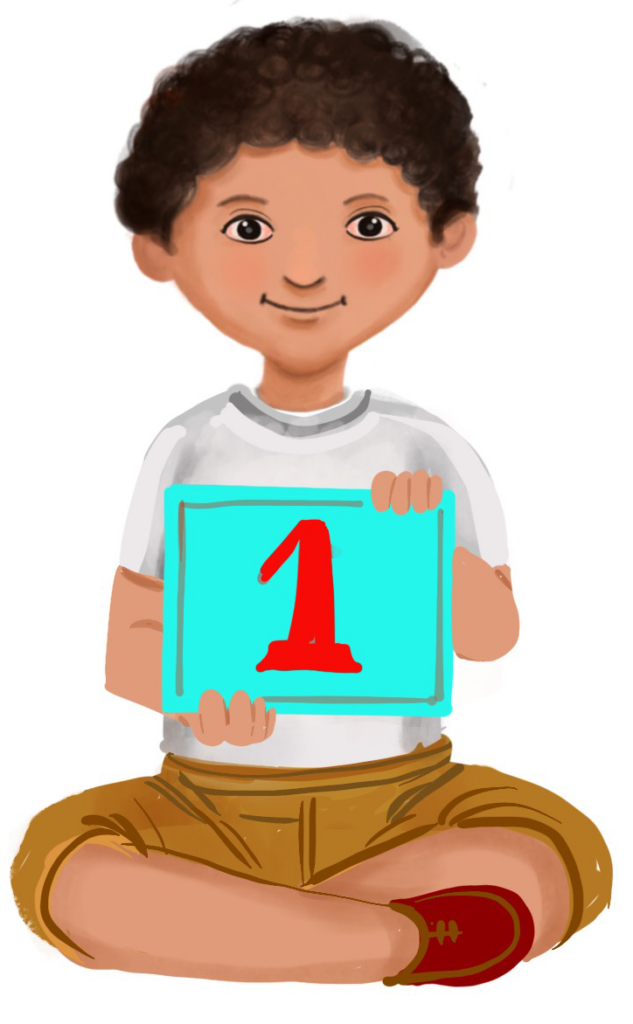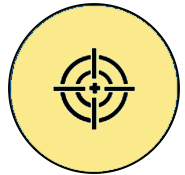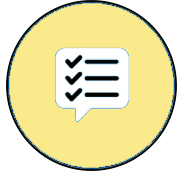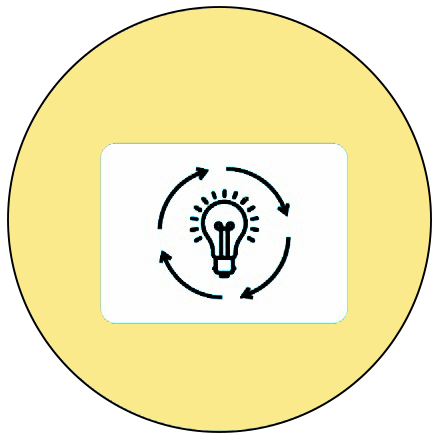
Numbers 21 to 50
Week 4
Learning Outcome
Compares two numbers that lie between 21 and 50 (both inclusive) and uses vocabulary like greater than (>), less than (<), or equal to (=) with an awareness of the relevant symbols.
 Objective
Objective
Children will be able to compare numbers that fall between 21 and 50 using the concepts of greater than, less than, and equal to.
 Prerequisites
Prerequisites
● Ability to form, read, write and count sequentially from 1 to 50
● Basic understanding of place value (Tens and Ones)
 Pre-teach Vocabulary
Pre-teach Vocabulary
● Compare: To find which number is bigger, smaller, or the same.
● Greater than (>): Used when one number is bigger than the other.
● Less than (<): Used when one number is smaller than the other.
● Equal to (=): Used when two numbers are the same.
Introduction
The teacher starts by greeting the class and says, “Today, we’re going to explore how to compare numbers and figure out which is greater, lesser, or even equal!” The teacher explains that just like we compare two objects by size, we can do the same with numbers to see which is greater, lesser, or the same.
The teacher explains, “We can compare numbers to know their order, just like lining up in a queue. The one with the greater number comes later, and the lesser number comes earlier.”
To make the concept more enjoyable, the teacher introduces a number line and shows how we can visually compare numbers by looking at their positions. For example, “Where is 25 on the number line? And what about 38? Which one is further ahead?”

The teacher writes two numbers on the board—say, 25 and 38—and asks, “Which one is greater?” After hearing some answers, the teacher continues, “Now, what if I write 43 and 43? These numbers are exactly the same, and we call them equal.”
When two-digit numbers have the same tens and ones places, the numbers are equal. So, 43 is equal to 43, 43 = 43
When we compare two 2-digit numbers:
The number with the greater tens place value is always greater.
The video, Number Song 21 to 50, can be played during the introduction.

Here, 38 is greater than 25. (As 3 tens is greater than 2 tens)
If both numbers have the same tens place value, the number with the greater ones place value is greater.

- The teacher introduces the symbols:
- Greater than (>): The open mouth of the symbol points to the greater number.
- Less than (<): The closed mouth points to the lesser number.
- Equal to (=): When two numbers are the same, this symbol is used.
Video: Introduction to Comparing Numbers 21 to 50 – Coming soon
ISL Video: Introduction to Comparing Numbers 21 to 50 – Coming soon
Activity 1: Compare the Numbers
Objective:
Students will compare numbers using the symbols >, <, and =
Importance of the activity for children:
Helps in developing:
- Numerical Skills (Number recognition, Sequencing, Place value)
- Cognitive Skills (Memory, Recall, comparing, logical thinking)
- Fine Motor Skills (Picking the card, holding the card)
- Gross Motor Skills (Walking around, standing, articulating)
- Social Skills (Working in teams/pairs)
- Emotional skills (sense of achievement on completion builds self-esteem)
Resources required:
- Number cards (21-50)
- Comparison symbol cards (>, <, =)
Setting for the activity:
Classroom with open space for students to move around.
Type of activity: Interactive group game
Preparation of activity:
- Create number cards for numbers 21-50
- Prepare comparison symbol cards
- Clear an open space in the classroom
Role of the teacher: Demonstrator and facilitator
Procedure:
- Divide the class into pairs.
- Give each pair two number cards and one comparison symbol card.
- Ask pairs to stand in a line, holding their cards up.
- Have the first pair read their number comparison aloud (e.g., “24 is less than 37”).
- Ask the class if they agree or disagree with the comparison.
- Discuss any disagreements and correct misconceptions.
- Repeat with other pairs, rotating cards between rounds.
Observations:
The teacher observes if children are able to comprehend the symbols (>, <, =) and apply them appropriately while comparing the numbers.
Conclusion:
Children can hold the number cards, use comparison symbols (>, <, =) appropriately and articulate the result loudly.
LTM: Tactile symbols – Coming soon
LTM: Number cards 21 to 50 – Coming soon
Video: Compare the numbers – Coming soon
ISL Video: Compare the numbers – Coming soon
Activity 2: Hop, Hop and Compare the Numbers
Objective:
To encourage number comparisons in an engaging and interactive way.
Importance of the activity for children:
Helps in developing:
- Numerical Skills (Number recognition, Sequencing, Place value)
- Cognitive Skills (Memory, Recall, comparing, logical thinking)
- Fine Motor Skills (Picking the card, holding the card)
- Gross Motor Skills (Walking around, hopping)
- Social Skills (Working in groups)
- Emotional skills (sense of achievement on completion builds self-esteem)
Resources required:
- Chalk or tape to create a hopscotch board with numbers (21-50)
- Prompt cards with various comparison scenarios
- Number cards (21 to 50)
Setting for the activity:
The activity can be done indoors or outdoors depending on the space availability.
Type of activity: Group activity
Preparation of activity:
- Hopscotch Board: Draw a hopscotch board with numbers ranging from 20 to 50.
- Prompt Cards: Prepare a set of prompt cards that include the following comparison scenarios:
Prompt Cards:
- Find a number that is greater than 25
- Find a number that is less than 40.
- Find a number that is equal to 30.
- Find a number that is less than 28
- Find a number that is greater than 35.
- Find a number that is greater than 20 but less than 30.
- Find a number that is less than 45 but greater than 30.
Role of the teacher: Demonstrator and facilitator
Procedure:
- Students take turns hopping through the hopscotch board, landing on a number.
- After landing, the student draws a prompt card from the stack
- The student must then find another number on the board that meets the criteria of the prompt.
For example:
- If they land on 27 and draw a prompt that says, “Find a number that is greater than 25,” they can say, “27 is greater than 25.”
- If they land on 38 and draw a prompt that says, “Find a number that is less than 40,” they can say, “38 is less than 40.”
- If they land on 38 and draw the prompt “Find a number less than 25,” they will look for a number on the board that is less than 25. If they find 20, they can say, “20 is less than 25.”
- If they don’t find it, they can say, “There is no number less than 25 on the board.”
Observation:
The teacher observes the comparing abilities of the children and guides them if any misconception is found.
Conclusion:
Children will learn the concept of comparing numbers that fall in between 20 and 50.
Video: Hop Hop and Compare the numbers – Coming soon
ISL Video: Hop Hop and Compare the numbers – Coming soon
Activity 3: Spin and Compare
Objective:
Students will spin a wheel with numbers between 20 and 50 and compare the two numbers spun.
Importance of the activity for children:
Helps in developing:
- Numerical Skills (Number recognition, Sequencing, Place value)
- Cognitive Skills (Memory, Recall, comparing, logical thinking)
- Gross Motor Skills (Walking around, spinning)
- Social Skills (Playing together, observing others)
- Emotional skills (sense of achievement on completion builds self-esteem)
Resources required:
- Two number spinners with numbers 20 to 50
- Comparison symbol cards
Setting for the activity:
The activity can be done indoors or outdoors depending on the space availability
Type of activity: Individual activity
Preparation of activity:
Create or print two spinners with numbers from 20 to 50.
Role of the teacher: Demonstrator and facilitator
Procedure:
- The teacher explains the rules. Students take turns spinning two number spinners and must decide if the numbers are greater, less, or equal
- Students spin both spinners, and based on the numbers, they place the correct comparison symbol (>, <, or =) between the numbers.
- After several rounds, the class discusses their results and reflects on the patterns they noticed (e.g., numbers closer to 50 are usually greater).
Observation:
The teacher observes how well children can use the spinners and compare the numbers.
Conclusion:
Children will learn the concept of comparing numbers that fall between 20 and 50.
Flashcards: DIY spin wheel – Coming soon
Video: Spin and Compare – Coming soon
ISL Video: Spin and Compare – Coming soon
Home Activity
Objective: To reinforce the concept of ‘greater than, less than, and equal to’ through a fun online activity.
Home Activity: Click on the right number – Word Wall – Coming soon
Cross-Curricular Connection:
- Language class:
Use words such as ‘greater than,’ ‘less than,’ and ‘equal’ in conversations. - Art:
Children draw and color a crocodile face, which they later use in Math class as a fun tool to compare numbers.
Assessment:
The teacher can give the practice worksheet to the children, which can be followed by an assessment worksheet.
Worksheet: Practice Worksheet – Numbers 21 to 50 – Coming soon
Worksheet: Practice Worksheet – Numbers 21 to 50 (Enlarged) – Coming soon
Worksheet: Assessment Worksheet – Numbers 21 to 50 – Coming soon
Worksheet: Assessment Worksheet – Numbers 21 to 50 (Enlarged) – Coming soon
Check list for teacher:
| Activity | Yes | No | Sometimes |
| Children can: | |||
| Compare two numbers that lie between 21 and 50 (both inclusive) | |||
| Use vocabulary like greater than (>) or lesser than (<) or equal to (=) with an awareness of the relevant symbols | |||
| Compare two numbers that lie in between 21 to 50 and articulate the result | |||
| Focus on the activity | |||
| Complete the activity in the given time | |||
| Do the activity independently | |||
| Express verbally and through actions, expressions, or gestures |
Adaptations for addressing learner variability: Adaptations and strategies – Coming soon
Teacher Resource Document – Coming soon
| Source and Attribution of images: All images used in the above Assets and Aids are originally created. |
| This digital material has been developed by the Sri Sathya Sai Vidya Vahini Inclusive Education Project, a unit of Sri Sathya Sai Central Trust, Prasanthi Nilayam, as a collaborative offering in the service of our nation. |